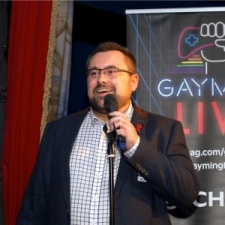As part of Pocket Gamer Connects Digital #6, we held a panel on delivering games with an inclusive audience in mind at all times.
Our panellists included
- Merfolk CEO Gabriel Meredith,
- A Thinking Ape live ops art lead Chloe Chan and
- Gray Jones Media co-founder Robin Gray
- Snap Finger Click design director Joanna Haslam and
- Mainframe Industries senior UX designer Jasmin Dahncke.
As explained by Haslam, inclusivity applies to everyone, not just those that fall under minority backgrounds. For example, when determining a platform for a game, all players matter in that decision.
As Chan went on to explain, the current game she is working on, of the fashion variety, has been designed to include everyone. Encouraging all kinds of players.
"I want to make the world a better place," said Dahncke.
To be truly inclusive, those in the games industry need to educate themselves and learn about all ethnicities in the world, "it is our job and our responsibility to learn about people," according to Dahncke.
Paving the way
When it comes to inclusive design, The Sims is a prime example of how games can be truly inclusive, appealing to all games and offering content for the LGBTQ+ community.
The Last of Us 2 is yet another example of pure inclusivity. Naughty Dog made the game accessible to many players, who may have struggled had the company not included a range of assistance options.
"The last of us has shown the way in terms of impairment," said Dahncke.
Chan explained that Kim Kardashian's mobile game surprised her with how inclusive it is, given it offers romance choices of any gender to all genders.
Mario Kart is also inclusive due to how simple it is to pick up and play and is a good fit for players of all abilities. Moreover, the advanced settings allow users to modify how they play the game to better suit their style.
Be inclusive
"Just engage with your community and use testing," Haslam said when discussing how to be inclusive with different groups.
To create a game for everyone, it is important to trust and understand that there may be people out there who can better understand different players and ethnic groups.
As Chan explained, a diverse development team will offer a range of opinions and provide various perspectives.
If a team lacks diversity, it is important to find an avenue to discover different perspectives. Such examples would include looking to a player base. Moreover, there "are many people that work for hire who can bring these expertise to your company."
No sacrifice needed
When discussing whether or not innovation has to be sacrificed for inclusivity, Dahncke explained that "it is not about that," it is about finding ways to bring more people to a game, sacrificing as little as possible.
For example, the Dark Souls series is famous for its difficulty, causing some players not to touch it or drop it. However, adding an easy mode would not take away from the difficulty for those that like the original experience. Instead, it makes the game accessible to players of varying abilities.
"It comes down to what is important to your game and what the focus of the game is," said Haslam.
If a game has a key focus on a certain area, then it may exclude a certain group. However, for the majority of games, small tweaks can be made to include a wider audience. Slight changes to factors such as audio can make a difference.
PGC Digital #6 will run from April 19th to April 23rd. To keep up to date with all of our coverage, check out the roundups here. There's still time to sign up - to find out more and book a ticket, head to the website.






















